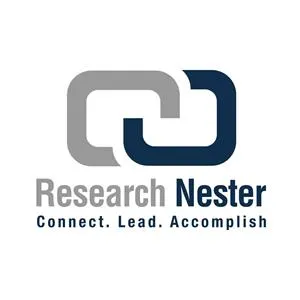Cellular rubber market forecast at $14.6 billion by 2035
New York, NY – The cellular rubber market is expected to witness significant growth in the upcoming years due to various factors. According to Research Nester the global intraocular lens market is projected to reach a value of USD 14.66 Billion by the end of 2035 with an annual growth rate (CAGR) of 8.40% during the forecast period from 2023 to 2035. In 2022 the intraocular lens industry had a market size of USD 5.57 Billion. Cellular rubber, also known as foam rubber is a material that finds applications in diverse industries such as automotive, construction and aerospace. It is lightweight, durable and cost effective while offering insulation and shock absorption properties.
The growth of the cellular rubber market can be attributed to its increasing demand in the automotive sector where it is extensively used for manufacturing gaskets, seals and other components. Moreover, there is a rising demand for materials like cellular rubber across industries as they align with sustainability and energy efficiency goals. Additionally green building materials such as rubber are witnessing increased demand in the construction industry due, to their energy saving features, durability and minimal environmental impact. Architects and builders are particularly drawn towards these attributes when making their choices.
The cellular rubber market experiences high demand from the automotive industry particularly as a result of the increasing need for lightweight and fuel efficient vehicles. Within the sector cellular rubber finds application in various areas such as gaskets, seals and insulation. The growth of the industry especially in emerging economies like India and China is projected to drive the demand for cellular rubber products. It’s worth noting that India witnessed a growth rate of 35.9% in automobile exports with numbers rising from 4,134, 047 in 2020 21 to 5,617,246, in 2021 22.
The construction sector is also a user of cellular rubber products. Cellular rubber finds application in construction areas like insulation, roofing and flooring among others. The growth of the rubber market is being driven by the increasing demand for energy efficient buildings and infrastructure. Additionally the expanding construction industry in developing nations is expected to fuel the demand for cellular rubber products. In 2021 private sector spending on construction in the US reached $1.20 trillion while public sector spending stood at $340 billion. Commercial construction expenditure, in the US amounted to $98 billion in 2022 with family residential construction expenditure reaching $405 billion.
The electronics sector also relies heavily on rubber products. Cellular rubber finds application in a range of uses, including gaskets, seals and shock absorbers. The expanding need for gadgets and equipment is fueling the growth of the cellular rubber market. The rising electronics industry in developing nations is anticipated to drive the demand, for cellular rubber products.
The aerospace industry is another major consumer of cellular rubber products, particularly for vibration isolation and shock absorption applications. Given the increasing desire for air travel and the requirement for safety and comfort there exists a notable potential, for cellular rubber producers to offer inventive solutions that cater to the distinctive requirements of this industry.
The manufacturing processes involved in producing rubber are quite complex leading to high production costs. This poses a challenge for manufacturers who find it hard to compete with larger players in the market. Additionally, the limited availability of materials needed for cellular rubber production can cause disruptions, in the supply chain and impact overall production output resulting in higher costs and longer lead times.
The automotive industry is a major driver of the cellular rubber market in North America. As the demand for cars continues to rise there is also an increased need for rubber components used in tire manufacturing, hoses and other car parts. In fact by 2023 the US automobile industry is expected to be valued at $105 billion, which represents a 27% increase from 2021. Additionally the continuous advancements in technology have paved the way for cellular rubber products that offer enhanced performance, durability and resistance to wear and tear. As a result these products are now highly sought after in industries such, as automotive, construction and manufacturing.
The market is segmented by product type, material type, application type, end-user, and by region. The material type is further segmented into neoprene, SBR blend, EPDM Ethylene Propylene Diene Monomer), silicone, natural, chloroprene, and others. The natural rubber market is projected to dominate the industry due to research and development efforts in sectors like automotive, chemical and others. The versatility of rubber with its excellent elasticity ability to dampen vibrations and resistance to abrasion has made it a preferred choice over synthetic rubber. This makes it essential for both the construction and automotive industries. The growth of the automobile sector in countries is expected to drive the demand for natural rubber production. Moreover there has been a surge in global demand for latex based products such as catheters, protective gloves and belts which has further increased the need for natural rubber. Natural rubber plays a role as a raw material, in manufacturing over 40,000 different products.
The cellular rubber market is highly fragmented with several small and medium-sized players. Some of the key players in the market include:
Armacell International S.A.; GCP Applied Technologies Inc.; Rogers Corporation; Zotefoams PLC; Johnson & Johnson Vision Care Inc., Bausch Health Companies Inc. Visit: https://www.researchnester.com/reports/cellular-rubber-market/2755

